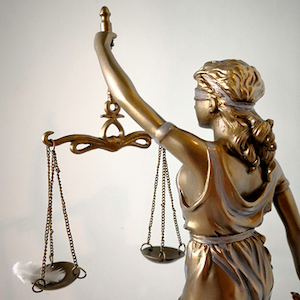By Dr. Ken Broda-Bahm:

At a recent jury selection, opposing counsel — the plaintiff in that case — stepped up to the box of prospective jurors holding two unopened reams of paper. I knew what was coming:
If the weight of evidence is completely equal, like these two reams of paper, then we haven’t met our burden. But, if there is even a very slim advantage on our side…. (He adds one sheet on top) …then the law says we’ve met our burden.
Another version of that puts a feather on one side of an evenly balanced set of scales. Or perhaps we take a 50 percent figure and add a tiny decimal point, like .00001, to it. It’s a well-known bit of courtroom theater, of course, but it can be pretty effective. In the recent case, it led to several defense-favorable jurors removing themselves from the jury for cause because they couldn’t personally make peace with the idea that the plaintiff should be able to win a large sum of money based on just a tiny sliver of proof.
The challenge for the defense is to answer that kind of demonstration in a way that leads the pool toward a view of evidence that’s a little more realistic. Before the jurors have heard any evidence, it can be pretty speculative and misleading for them to think about the evidence as something that can be counted like sheets of paper or weighed like a feather. In this post, I’ll focus on some ways the defense can craft their early messages on burden of proof.
Call Out the Plaintiff’s Feathers, Single Sheets, and Decimal Points
For plaintiffs, the ream of paper is better than the feather, because the feather subtly conveys that they plan to give the jury almost nothing, and the ream at least signals that there will be a lot of evidence on their side. And that reality points to where the defense should emphasize, with a message that the plaintiff starts the case at zero, not at fifty percent.
Now, a moment ago, my colleague on the other side held up this ream of paper. It’s kind of heavy. And it’s a good symbolic reminder of the task ahead for the plaintiff. They have to prove every element of their claim is more likely true than not true. They have to prove that the facts they’re relying on to support those elements are more likely true than not true. So, while they want you to think of the single sheet that would put them over the top, your attention needs to be on every sheet in this whole, heavy ream of paper. Because they’re not starting at a point of even balance with the defense, they’re starting at zero. And they will need to prove every sheet to you. Does thinking about it that way make any of you feel better about that burden of proof? Who thinks that is an unfair expectation to put on the plaintiff?
But Don’t Unrealistically Minimize Your Own Burdens Either
A common part of the message from the defense, of course, is “We have no burden, we don’t have to prove anything.” This message can be complicated in some areas of civil litigation, though, and many defendants do, in fact, carry a burden on some counterclaims or affirmative defenses. But even where a defendant doesn’t carry those burdens, I don’t think it is a good message to dwell on one’s own lack of a need to prove. Go ahead and say it once, because it makes a logical argument, and a few of your more analytical jurors might latch on to that logic. But remember that it is only a logical argument: the emotional appeal of the argument runs the other way. The jury is implicitly invited to think you don’t plan on proving anything and that you’re not committed to the superiority of your case. The reality is that you will prove quite a bit. And in practical terms, nearly every jury will expect you to.
Giving an economical reminder on your burden won’t hurt. In the long-run, though, I believe defendants are better off embracing the reality: though you may not legally have a burden of proof, you do practically have a burden of persuasion.
____________________
Other Posts on Burden of Proof:
- Keep Your Burden of Proof in Your Back Pocket
- Expect Broad Spectrum Assessments (Especially for Defendants)
- Expect Jurors to Apply Their Own Standard of Proof
____________________